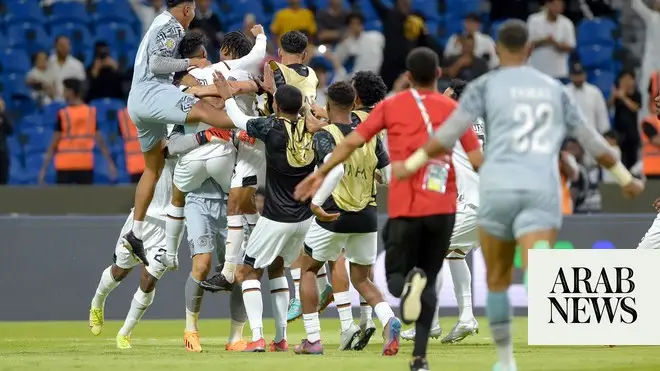Saudi Arabia's Al-Nassr and Al-Shabab reach semifinals of King ...

The ongoing FIFA Women’s World Cup in Australia and New Zealand has been historic for several reasons.
Debut victories, record crowds and milestone goals have marked a thrilling group stage that saw the likes of Brazil, Germany, Canada and Italy fall by the wayside, while emerging nations including Morocco, South Africa and Jamaica have stolen the show.
The Moroccans won the hearts of fans around the world after their miraculous qualification for the last 16 with back-to-back victories over South Korea and Colombia.
The scenes in Perth of the players and coaches erupting in wild, tearful celebration as they progressed to face France, went viral around the world, touching even the most hardened football fans.
Their success is testament to many years of investment and development from their federation, and stands as the ultimate blueprint for the rest of the Middle East and North Africa region.
While Morocco made history as the first Arab nation to play at the tournament, which was first held in 1991, it is notable that no country from the Middle East has qualified for the global showpiece — and that does not appear likely to change any time soon.
The development of women’s football in the region remains frustratingly slow.
In contrast to nations that are progressing, like Saudi Arabia, which has significantly increased its investment in recent years, there countries like Qatar and the UAE where progress appears almost nonexistent.
Others simply do not have the resources.
“Unfortunately, from an economic point of view, we’re still behind,” former Lebanon international Assile Toufaily told Arab News.
“We still have this problem of lack of funding, lack of sponsorship opportunities, lack of media representation, lack of governmental support and this is blocking the development. What is happening in Saudi Arabia is an exception.”
Toufaily said, however, there has been some progress made with a greater level of acceptance, if not necessarily support, for women’s football within the region.
Former Jordan international Stephanie Al-Naber, who also sits on the Asian Football Confederation’s women’s committee, told Arab News progress has been made but roadblocks still exist in the culturally conservative region.
“The overall development of women’s football in West Asia in recent years has shown positive progress,” Al-Naber, who captained her country, explained.
“There has been an increase in participation, investments, and attention to the sport, indicating a growing interest in developing women’s football in the region.
“Despite the progress, women’s football in the Middle East still faces several challenges.
“Some of these include societal norms and cultural barriers that may limit opportunities for women to participate, lack of adequate infrastructure and resources, and the need for further support and recognition from governing bodies.”
It was hoped that Jordan hosting the 2016 U-17 Women’s World Cup and the 2018 AFC Women’s Asian Cup, the first time a nation from the Middle East had held either of those competitions, would be a catalyst for change within the region.
But, while Jordan continues to be one of the leaders within the region, other countries are still lagging behind.
Given their hosting of the men’s World Cup last year, Qatar is one example that stands out for all the wrong reasons.
As the country went through an enormous program of infrastructure development, pouring tens of millions into football’s showcase event, its women’s team was left to wither on the vine.
An unofficial friendly in 2021 against Afghanistan, and the odd cultural exchange trip, is the total extent of their activity since 2014 when they participated in the Women’s West Asian Championships and lost all three games in the group stage.
The team is not listed on the FIFA rankings and its official status is unclear.
“We are waiting for the legacy of the World Cup to bring us up, that’s our only hope,” Hagar Nader Nessim Aziz Saleh, a player with the national team, was quoted as saying by The New York Times last year.
“Of course we are feeling sad and want to participate,” she added to German outlet DW.
“I don’t think we have a ranking now, because we didn’t play a proper match for such a long time. If you aren’t playing, you can’t improve.”
There are green shoots in Saudi Arabia, however, which has poured significant investment into its women’s program in recent years as it looks to make up for lost time.
On the back of the successful launch of its first professional league last year, the Saudi Arabian Football Federation recently announced a further investment of $13 million aimed at improving club governance and sustainability, expanding competition opportunities, and creating jobs within the women’s game.
With a bid for the 2026 Women’s Asian Cup on the table, and a burgeoning domestic league that now boasts Morocco’s World Cup goalscorer Ibtissam Jraidi, former French international Lina Boussaha, experienced US coach Kelly Lindsey and former West Ham star Nor Mustafa, there is reason at last to be optimistic about women’s football in the Middle East.
The question remains, however, will others follow Saudi Arabia’s lead?









































